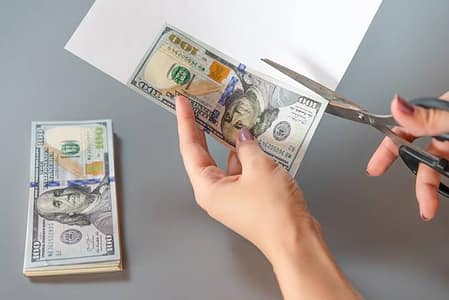

It is unlawful person construct, facilitate, design, orchestrate any act of participation in any acts of illegal betting or gambling, illegal betting pool programs, illegal bookmaking programs at any time or place for the purpose of encouraging a player or participant of a sport to alter the natural conclusion of the event to the detriment of the sport, its agents, sponsors, and those in lawful receipt of its gain for the personal gain of the person encouraged to manipulate the sport.
The acts of participations that qualify for a violation of Penal Code 337(b) PC are: (1) Acting as an escrow, intermediary, straw man, or point of leverage for the purpose to affect any probability of chance that can affect any stake; any pledge; any bet; or (2) Affect the result of any stake; any pledge; any bet; or any participant in the sport to affect its natural conclusion. All the above acts are qualified as enumerated acts, meaning that they are independent and unique of each other and require no nexus to qualify as a violation under Penal Code 337(b) PC.
This indicates that the accused might have an authentic registered mark from the USPTO; but as pertinent to the terms of the agreement, exceeded the scope and purpose of the contract by creating more units as permitted by the original holder of the USPTO mark, or exceeded the scope of utilization as authorized by the original holder of the USPTO mark. An illustration of this would contracting for 100 units with a designated mark, licensee of the mark designed to create 1000 units.
The mental state required for a violation of Penal Code 350 PC is willful and intentional. Willful means a person does an act on purpose, knowing its unlawful characteristics, and desires its result. Intentional means a person has a conscious desire to do an act on purpose and desires the consequences necessary to achieve the result.
Willful, as a mental state, to be charged with a violation of Penal Code 350 PC, the State must prove that the accused, beyond a reasonable doubt, knew the conduct was unlawful and acted with the purpose to disobey the law. The State does not have to prove the accused had an evil motive.
Intentional, as a mental state, to be charged with a violation of Penal Code 350 PC, the State must prove that the accused, beyond a reasonable doubt, that the accused had a conscious desire or purpose to act in a way to cause a certain result or knew that acting in such a way would procure the results desired.
In application to Penal Code 350 PC: First, the accused knew that he had a mark that was counterfeit because it was not registered with the USPTO, or that the person was not given rights to possess that mark by the registrant of the USPTO identifier, and knew that doing so was unlawful but acted purposefully to misrepresent the fact that the service of goods associated with that counterfeit mark was authentic, and another person relied on that misrepresentation to their detriment, for the personal gain of the accused; Second, the accused consciously desired to use a mark that was counterfeit because it was not registered with the USPTO, or that the person was not given rights to possess that mark by the registrant of the USPTO identifier; and knew that doing so, would lead to the detriment of another, for the personal gain of the accused, because the accused had a mark that was not registered with the USPTO, nor was given rights to possess that mark by the registrant of the USPTO identifier, but misrepresented fact to another who believed the mark’s authenticity to transact for the good or service for the value.
Yes. Sole proprietorships.
A violation of Penal Code 350 PC is charged as either a misdemeanor or felony:
If it is proven beyond a reasonable doubt that the violation involved less than 1,000 articles with the value to be less than the threshold for grand theft, punishment includes confinement of no more than 1 year in county jail; but as a private party the fines not to exceed $10,000 dollars; but as a commercial entity the fines not to exceed $200,000 dollars.
If it is proven beyond a reasonable doubt that the violation involved more than 1,000 articles with the value to be greater than or equal to the threshold for grand theft, punishment includes confinement of no more than 1 year in county jail or 16 months, 2, 3 years in prison; but as a private party the fines not to exceed $500,000 dollars; but as a commercial entity the fines not to exceed $ 1,000,000 dollars.
If this is a subsequent conviction no matter if the articles are more or less than 1,000 units, and the threshold of grand theft is either not equal to, equal to, or exceeding the threshold; punishment for not exceeding the threshold with less than 1,000 articles is confinement not exceeding 1 year in jail with fines not exceeding $100,000 dollars; but if the threshold is exceeded or equal to, confinement is 16 months, 2, 3 years in prison with fines not exceeding $400,000 dollars.
If the first conviction causes serious bodily injury, that is foreseeable: with articles less than 1,000 and the threshold is not met, the punishment is confinement of 16 months, 2, 3, 4 years in prison with fines not exceeding $100,000 dollars; but if the articles are more than 1,000 with the threshold equal to or more, confinement is 16 months, 2, 3, 4 years in prison with fines not exceeding $400,000 dollars.
Any conviction or plea of nolo contendere (plea to the facts but not admitting guilt), a summary forfeiture or criminal forfeiture proceeding can ensue resulting in the confiscation and destruction of all goods and services bearing the counterfeit mark; including all assets utilized to transport, manufacture or advertise the relevance of the counterfeit mark.
If there is community property or an exemption that applies under statute that property will be released to the non-offending owner. If that property is under term of lease, or revocable trust per terms or conditions, that lease and or terms will prevail with the property being sent back to its original status.
If you are charged with a violation of Penal Code 350 PC call The Esfandi Law Group, APLC. Contact our criminal defense attorney today.
Call LAW MART for a FREE Case Review: 310-894-6440

Copyright © 2024 law – Powered by AmelCS